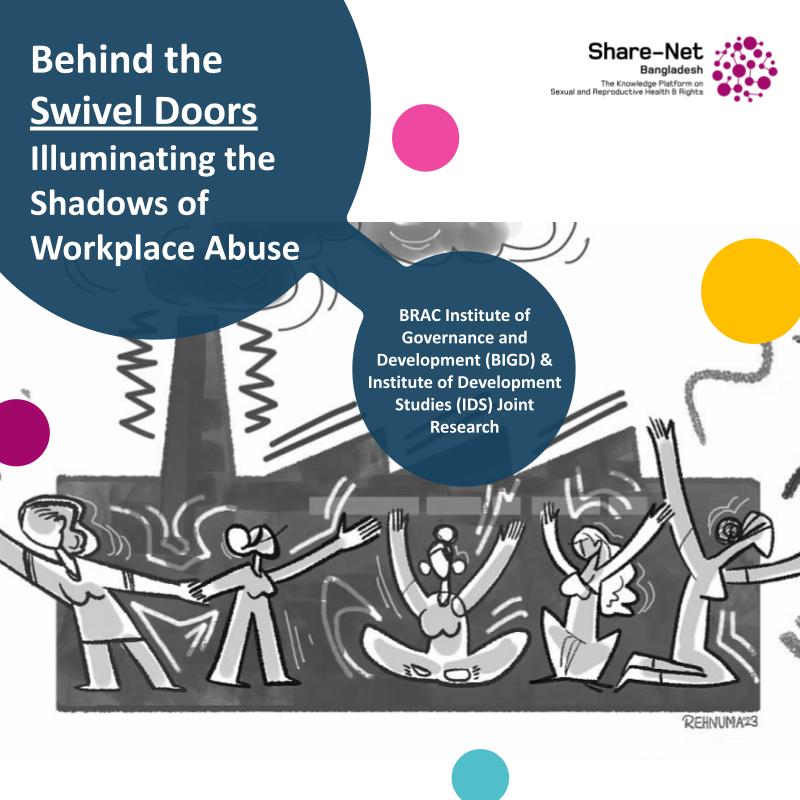Behind the Swivel Doors: Illuminating the Shadows of Workplace Abuse
Despite strides towards gender equality, workplace sexual harassment remains alarmingly prevalent, stifling the professional aspirations of many women. A recent collaborative study by the BRAC Institute of Governance and Development (BIGD) and the Institute of Development Studies (IDS) delved into the experiences of women, particularly those in precarious employment like domestic work and agro-processing firms.
The study sheds light on the harsh reality that, among the 60.8 million employed women in Bangladesh, an estimated 5.5 percent have encountered sexual abuse. Disturbingly, this figure likely underestimates the true extent of the problem, highlighting the challenges of capturing the nuances of such a sensitive issue through surveys.
The research underscores the pervasive nature of sexual harassment, transcending workplace boundaries and impacting women during their commute. Alarmingly, it reveals that 7.4 percent of urban women have experienced sexual abuse, emphasizing the urban-rural divide in the prevalence of this issue.
The garment industry, a cornerstone of Bangladesh’s economy, has long grappled with gender-based violence and sexual harassment. Female garment workers, often migrants from vulnerable backgrounds, face power imbalances due to a predominantly male supervisory hierarchy. Shockingly, the Fair Wear Foundation found that 75 percent of female garment workers experienced verbal violence, 30 percent endured psychological violence, and 20 percent faced physical violence at work.
The research highlights the complex interplay of factors contributing to the persistence of workplace sexual harassment. Fear of job loss and a lack of effective complaint mechanisms within formal channels hinder victims from reporting incidents. Moreover, the normalization of such behavior within certain industries, like the ready-made garment sector, further exacerbates the problem.
While government policies and laws acknowledge the need to maintain harassment-free workplaces, implementation remains a significant challenge. Even workplaces with designated committees for prevention and complaints struggle to make them functional, underscoring the need for a more robust approach.
The BIGD/IDS research emphasizes the critical role of awareness in addressing workplace sexual harassment. It reveals a general awareness of the issue, though the language to articulate these experiences is limited. Women often employ various strategies to prevent and cope with harassment, including leaving their jobs or resorting to informal avenues to address perpetrators.
Although, it’s been less than a month since we celebrated the 52nd Victory Day of independent Bangladesh, this study serves as a stark reminder of the pervasive and deeply entrenched nature of workplace sexual harassment that our mothers-sisters-wives-daughters have been facing, days after days. To combat this issue effectively, a multi-faceted approach is essential, involving not only legislative measures but also a cultural shift within workplaces to ensure the safety and dignity of all employees, irrespective of gender or employment status.
Original Contributor: Maheen Sultan, Senior Fellow of Practice, BRAC Institute of Governance and Development (BIGD), and member, Naripokkho
Source: Prothom Alo
Illustration Credit: Rehnuma Proshoon (Pic Source: Prothom Alo)


